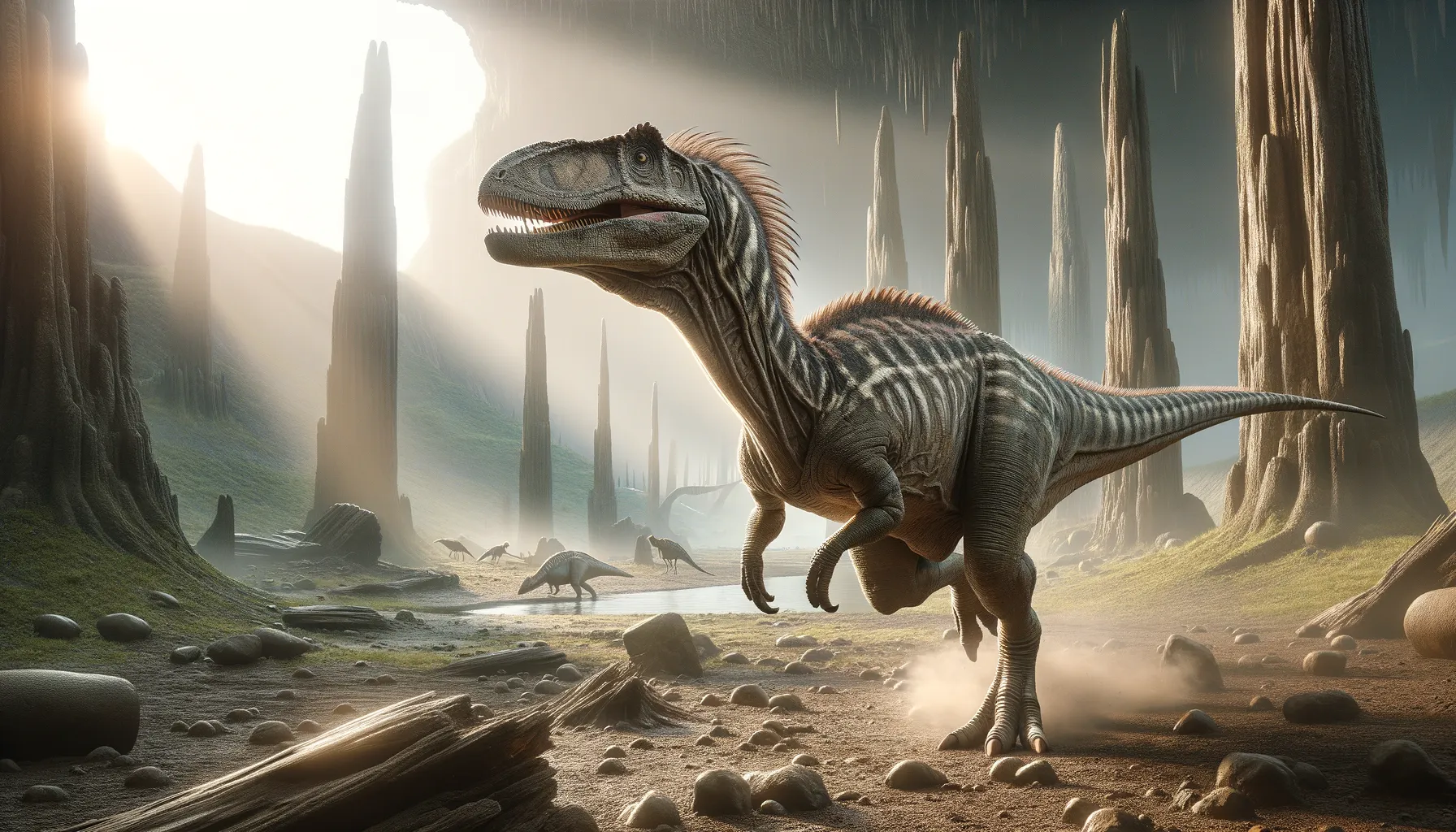
Craterosaurus
Armored survivor of the ancient world!
Period
Cretaceous
Length
Roughly 5 meters long.
Height
About 2 meters tall.
Weight
Approximately 500 kilograms.
Craterosaurus was a small herbivorous dinosaur from the early Cretaceous. Residing primarily in what is now Europe, it was known for its strong neck and characteristic body armor, which provided significant protection against predators. Its remains offer scientists key insights into early Cretaceous ecosystems and the diversity of dinosaur life during this period. Though not as well-known as other dinosaurs, its distinctive features make it an intriguing subject of study.
Diet
Craterosaurus was herbivorous, feeding on a variety of plant life. These dinosaurs had teeth adapted for cropping and grinding tough vegetation found in their surroundings.
Hunting
As a herbivore, Craterosaurus did not hunt other animals. Instead, it foraged for food, likely spending a significant portion of its day browsing for leaves and plants.
Environmental challenges
Craterosaurus faced numerous environmental challenges including predators, food scarcity, and climate changes. Its armored body served as a defense against predators. During dry seasons, finding the necessary plant material could have been challenging. Changes in habitat brought about by climate shifts also required adaptability.
Speed
Likely slow-moving given its body structure.
Lifespan
Estimated around 20 years.
First discovery
Discovered in 1874 in England.
Fun Facts
- Craterosaurus lived during the early Cretaceous period, which was about 140 million years ago.
- This dinosaur's name means 'bowl lizard,' referring to the unique shape of its skull.
- Craterosaurus was a small dinosaur, estimated to be only about as long as a medium-sized dog.
- It belonged to a group of dinosaurs known as nodosaurs, which were heavily armored plant-eaters.
- The fossil remains of Craterosaurus were first discovered in England, giving insight into European dinosaurs.
- Only fragments of Craterosaurus have been found, so much about its appearance remains a mystery.
- Craterosaurus had bony plates and spikes on its back, providing it protection from predators.
Growth and Development
Growth in Craterosaurus was relatively slow compared to some contemporaries. Young were hatched from eggs and had to quickly adapt to their environment. Initially, they stayed in close proximity to their nesting areas for protection. Parental care might have been present to ensure the survival of the young in their early vulnerable stages.
Habitat
Craterosaurus inhabited lush, vegetative regions that provided ample food supply. Its environment was comprised of open plains and forested areas that allowed it to forage efficiently. The availability of water sources such as rivers and lakes was crucial to its survival. Seasonal changes in these habitats would influence migratory behavior.
Interaction with other species
Craterosaurus interacted primarily with other herbivores and potential predators. Predation pressures would drive social behaviors such as grouping for protection. Competition with other herbivores for resources may have shaped its dietary preferences. Symbiotic relations with certain plants may have been present, benefiting both the dinosaur and the ecosystem.
Natural lifespan
Craterosaurus likely lived up to 20 years, barring predation or disease.
Reproduction
Reproduction occurred through egg-laying, with nests possibly constructed in secluded locations. Clutch sizes and incubation periods remain speculative due to limited fossil evidence. Hatchlings may have remained in nests for a period under watchful care of adults to increase survival rates.
Social behaviour
Social behavior in Craterosaurus might have included herding to deter predators. They may have established hierarchies within groups for space and resources. Communication methods are unknown, but visual or auditory signals might have played roles in group cohesion.
Fossil locations
Fossil evidence has primarily been found in southern England. These discoveries aid in piecing together the geographic distribution of this species. Limited remains have been unearthed, making each find crucial to understanding its existence. Further excavations are necessary to fully elucidate its historical range.
